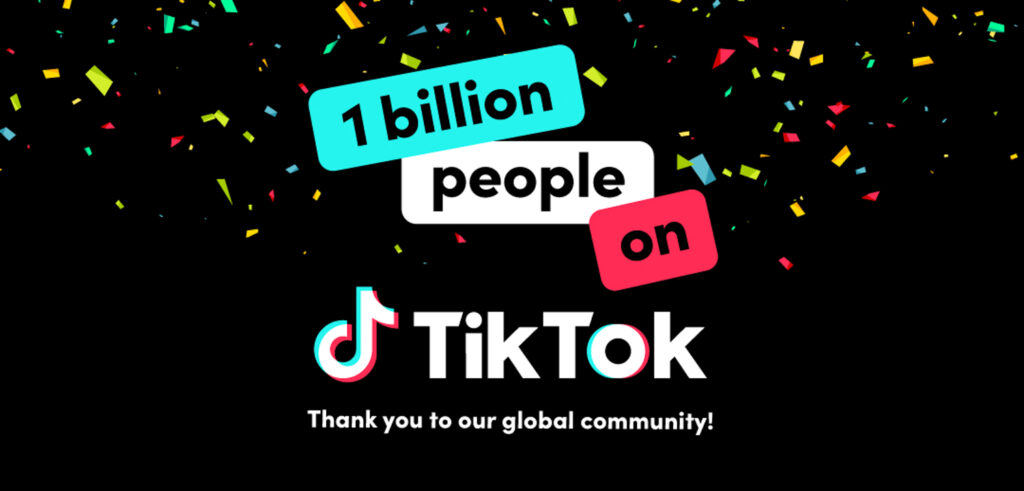
From the television to the computer and, in more recent times, the mobile phone and its subsequent smartphone developments, each new technological advancement was met with the same response: hesitancy, experimentation and acceptance. The same can be seen in the response to new media and TikTok is no different; at first it was dismissed, then as it became more popular brands started experimenting with the platform, and now it is an accepted social media platform for brands. The hesitation to get on board with TikTok means that now brands are scrambling to figure out the platform, and some are approaching it in the completely wrong way. TikTok isn’t just an app where you have to dance and embarrass yourself online; through developing an informed TikTok strategy with established content pillars, you can promote your brand in a way that is appropriate for TikTok yet still in line with your branding.
Content pillars are a set of themes or topics a brand can use to create content across social media channels. It makes generating regular content easier and more diversified by alternating between different categories. Content pillars are specific to your brand and allow you to hit different areas of your strategy. We’ve put together a set of content pillars to use as part of a TikTok strategy that can help you to break into the platform: funny content, work/service/product promotion, content that informs expertise, showcasing skills and internal branding.
1.Funny/Relatable Content (Including Trends)
The content that is most likely to be shared (and possibly go viral) is funny and relatable videos. This could be highlighting a shared struggle, for example common work scenarios, or funny industry-specific humour. The best way to create content like this is by jumping onto a trend and making it relevant to your business.
RyanAir had large success by adopting TikTok’s trends and humour across their branding. They are known for their face plastered over a greenscreen image of a plane across almost all videos. It works so well that when a sponsored TikTok from RyanAir does show up, people are unlikely to scroll by.
Another successful brand is Duolingo, who have taken advantage of the Duolingo meme to create a personality for their mascot, Duo, and inadvertently created a new sub genre style of branded TikToks: mascottok.
2. Promoting Work/Service/Product
Promoting your product or service on your TikTok is a must, and this can be done through creating before-and-afters, timelapses, appealing product shoots, testimonials of your service, or jumping onto trends such as the “so you’re an artist?” trend.
Fenty takes advantage of TikTok’s thriving beauty community by creating content such as tutorials, how-to videos and wear tests. It not only is engaging and informative, but best promotes the product in the way that feels native to the platform. Brainstorming all the ways that someone could use your product or service and condense it into 90 seconds or less is one way to approach this.
Coles is an example of a large brand that seemingly has no place on TikTok, but have done incredibly well by taking advantage of trends such as this one to showcase their services. In this way, a brand that targets low-income earners and primary household caretakers repositions itself as trendy with a younger demographic.
3. Content Relevant to Your Brand
Whatever industry your business falls into, we all gain inspiration and learn from different places. If you are a fashion retailer, sharing content of designers who have influenced your style or fashion periods/aesthetics helps audiences understand the persona of your brand. These relevant ideas can be shared in the form of day-in-the-lifes, gallery visits or mood boards.
As a design studio, we gain inspiration from different areas of life, such as art, other designs, current trending styles or events. By sharing moodboards, art gallery visits, etc. we inform our design-focused audience that we are aware of current trends and the ideas that inform our design.
4. Tips and Tricks
You may have a great product or service, however being able to inform your audience and present helpful information showcases your skills and expertise. Consider ways that you can communicate this as part of your TikTok strategy, whether that be through solving a problem or presenting a case study.
Popflex, an activewear brand started by fitness YouTuber Blogilates, does a great job of showcasing her skills by applying her expertise to solve common activewear problems. From a bag with a dedicated yoga mat holder to tights that don’t ‘camel toe’, she informs her audience that she is attentive and proactive.
5. Internal/Behind-The-Scenes
TikTok is populated with younger audiences under 30, who grew up tired of traditional marketing, sales gimmicks and Photoshopped Instagram influencers. The current trend amongst younger audiences is the unashamedly raw, uncut and ‘real’ vibe; they are not interested in hearing a sales pitch, but want to see the real people and struggles behind a business.
The Quick Flick is a successful Australian-made brand by founder Iris Jade. Throughout her TikTok she details the journey from first product testing and development, the original name of her sunscreen being rejected all the way through to manufacturing at their Perth site. In the above TikTok she highlights the people supporting and helping the brand and we feel as though we’re part of the journey of her product being sold at Coles.
Whilst creating a TikTok strategy might seem daunting at first, understanding its potential by not devaluing the platform to simply dancing videos will allow you to find success on the platform. When taking an organic approach and building a following, consistency is key. Content pillars make it easier to ideate and create content for your TikTok page that is relevant and strategic.
